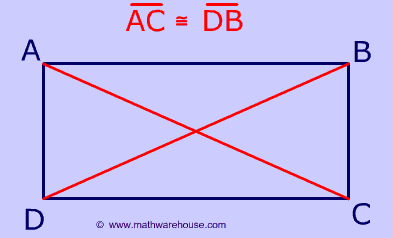

The perimeter of a square is calculated by using the formula: The area of a rectangle is measured as the product of its length and width. The area of a square is measured using the formula: Area = Side × Side No such shapes can be formed with the point of bisection of the diagonals of the rectangle. One angle is an obtuse angle and the other one is an acute angle.Ī circle can be formed with the point of bisection of the diagonals as the center of the circle since all the four vertices are equidistant from the point of bisection.

The diagonals of a rectangle bisect each other at different angles. The diagonals of a square bisect each other at 90°. In a rectangle, the opposite sides are equal. Both square and rectangle have distinct properties that allow us to distinguish them. Both the square and the rectangle are two-dimensional objects that only have length and width.ĢD figures can have a variety of properties that help us distinguish and characterise each shape. Rectangles, squares, circles, hexagons, and triangles are just a few examples of 2-D figures. A paper sheet, for example, is two-dimensional in shape, with a length and width but no height or depth. There is no thickness or depth to these figures.

It’s a two-dimensional flat figure with two dimensions: length and width. Two-Dimensional ShapeĪ flat figure is considered a two-dimensional shape. A rectangle is sometimes known as an equiangular quadrilateral, just like a square. Each of the four angles in a rectangle is around 90 degrees. It signifies that the rectangle’s opposite faces are of equal size. A rectangle’s opposite sides are parallel to each other. It’s also known as a parallelogram because its opposite sides are parallel.Ī rectangle is a four-sided quadrilateral. RectangleĪ rectangle is a quadrilateral in Euclidean geometry, and like the square, it contains four equal angles at 90°. A square is a specific case of a rhombus and can be characterised as a special rectangle because its opposite sides are parallel to each other (having four equal sides). According to Euclidean geometry (a mathematical system credited to the Alexandrian Greek mathematician Euclid), a square is a polygon that is equiangular (all angles are equal in measure) and equilateral (all sides are equal in length). However, trapezoids, cyclic quadrilaterals, trapeziums, and other four-sided polygons abound. It is also known as a parallelogram in addition to being a quadrilateral (opposite sides are parallel to each other). SquareĪ square is a four-sided polygon known as a quadrilateral in geometry. All angles are equal, the measurement is 90 degrees, and the diagonals are likewise equal.

They have certain things in common and some things they don’t. All of the forms can have a few common traits that distinguish them from one another.īoth the square and the rectangle are members of the Quadrilateral family of four-sided polygons. In geometry, we’ve learned about squares, rectangles, cubes, cones, cylinders, parallelograms, rhombuses, and many other shapes.Īll of these shapes fall into one of two categories: two-dimensional or three-dimensional. The main distinction between a square and a rectangle is that a square has all of its sides equal, whereas a rectangle has its opposite sides equal.


 0 kommentar(er)
0 kommentar(er)
